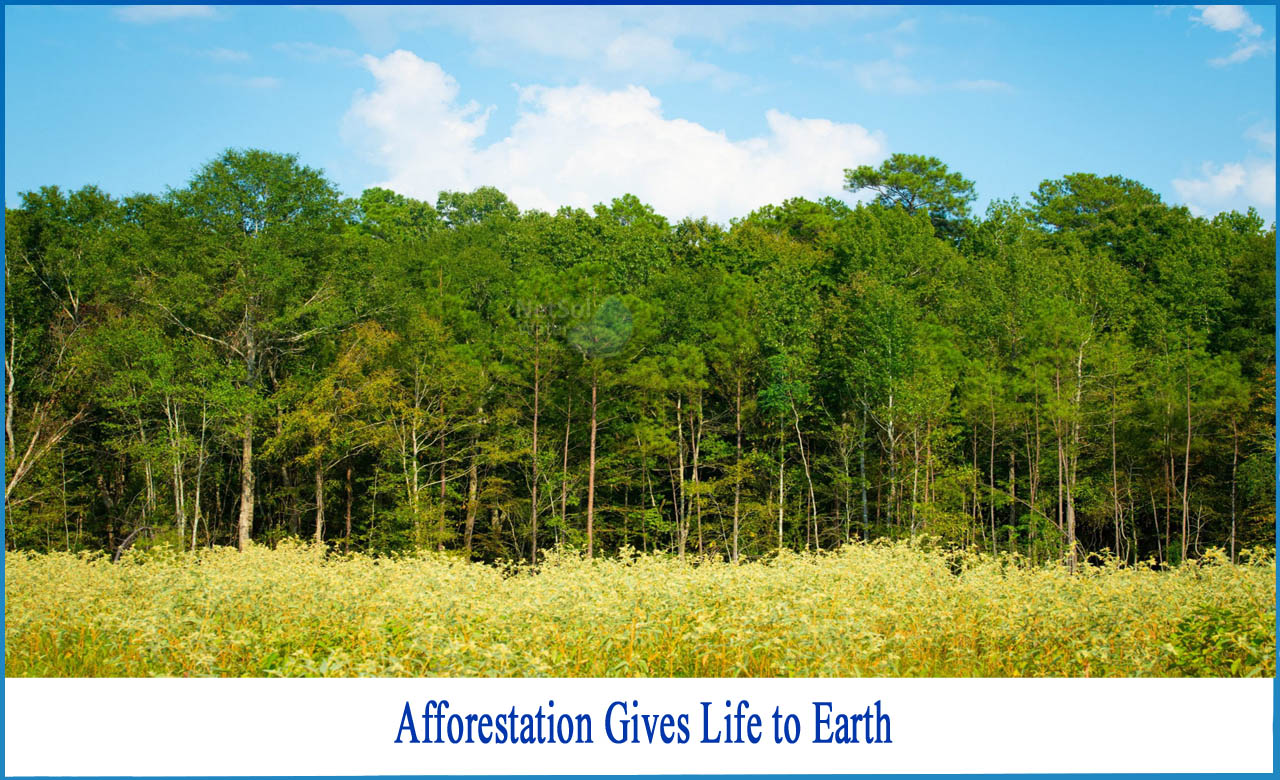WHAT DO YOU MEAN BY AFFORESTATION?
Afforestation is the process of planting trees in regions that haven't had any tree cover in the recent past in order to build a forest. Zones that have become desert (due to desertification), regions that have been used for grazing for a long time, abandoned agricultural fields, and industrial areas might all be planted. Afforestation mainly entails planting trees on abandoned agricultural or other fields owing to low soil quality or overgrazing. The soil has become drained over time, and not much can currently grow there. Smaller afforestation operations can be carried out in abandoned urban areas, such as land that was formerly cleared for structures that no longer exist.
Afforestation can occur on terrain that may or may not have previously been covered in forests. There may be no evidence of a forest being in the area designated for afforestation, or deforestation may have occurred on lands hundreds of years ago.
WHAT IS THE AIM OF AFFORESTATION?
Afforestation's major goals are to lower CO2 levels in the atmosphere, improve soil quality, and either prevent or reverse desertification. Estimates of how much CO2 is removed from the atmosphere by various afforestation programs vary, but one research indicated that by 2030, large-scale afforestation may remove more than 191 giga-tonnes of carbon. Afforestation, on the other hand, offers numerous other advantages, which is why communities and governments opt to invest in it. Afforestation provides a habitat for local species, creates wind breaks, supports soil health, and may even aid improve water quality. Plants, animals that eat them, and insects all benefit from healthy soils as a natural water filtration system and a source of nourishment.
Forests can help to enhance topsoil over time. Afforested areas fix nitrogen at higher rates, and they have also been demonstrated to neutralize soil pH (reducing acidity in acid soils and alkalinity in alkaline soils). Trees can provide societal benefits as well, such as providing shade for people or cattle. Forests, of course, can provide habitat for animals, particularly birds and insects, some of which may supply food for humans or contribute to a place's biodiversity.
IS AFFORESTATION DIFFERENT FROM REFORESTATION?
Both afforestation and reforestation have the goal of increasing the number of trees, however there are a few major distinctions:
· Afforestation is the process of planting trees where none previously existed whereas planting trees in regions that are already forested but have lost trees due to fire, disease, or clear-cutting for logging operations is referred to as reforestation.
· When an area has been deforested, both reforestation and afforestation can be done. Deforestation can be caused by short-term factors such as logging or fire, or long-term factors such as the removal of forests to graze cattle or cultivate crops for agriculture.
AFFORESTATION IN INDIA
Since the 1950s, India's forest cover has expanded by 30 million hectares (74 million acres), and the country today has a forest cover of roughly 24%. Prime Minister NarendraModi has allotted $6.6 billion to several Indian states for various projects, including afforestation, with the goal of covering one-third of the country with forest cover. One million people came in Utter Pradesh, India's most populous state, to plant 220 million trees in one day.
Much of this effort is being done to assist India in meeting its climate change commitments and increasing carbon sinks in order to reach India's Intended Nationally Determined Contribution (INDC) goal of drawing down 2.5 to 3 billion tonnes of CO2 by 2030.




